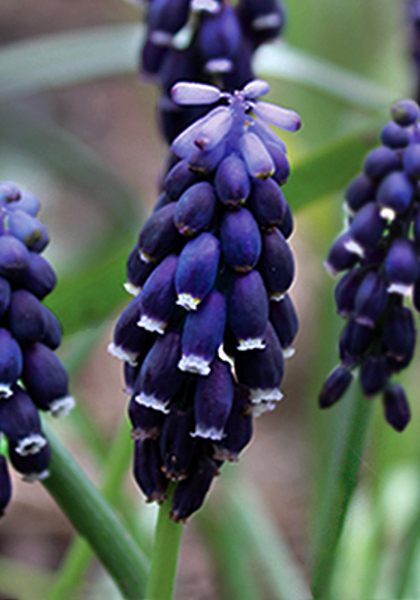|
|

   
|
|
Dark, midnight-blue starch hyacinths or blue bottles have made themselves at home and multiplied without care in sunny gardens and shady lawns throughout the South for generations – and they do equally well up North! (If you’re looking for the original grape hyacinth, we’re sad to say it has recently gone “commercially extinct.”) From Holland, 6-10”, zones 5a-8b(9bWC). |
|
SUB TYPE wildflower ZONES 5a-8b(9bWC) HEIGHT 6-10” BLOOM SEASONS spring LIGHT full sun, half sun, light shade |
PLANTING & CAREPlant ASAP when you receive them in October. Grape hyacinth bulbs are naturally small and can dry out and die very quickly in storage. Choose a sunny to lightly shaded site with well-drained soil. Plant about 3” deep, 3”-4” apart. Scratch a tablespoon of bulb fertilizer into the surface soil; slow-release 10-10-10 is ideal. Water well. Consider protecting with plastic netting, chicken-wire, etc., for a few weeks after planting, typically the only time pests bother these animal-resistant little bulbs. Do not mulch. Mulch is often too thick or heavy for small bulbs such as grape hyacinths and their growth will suffer — if they emerge at all. For rapid spread, allow flower-spikes to mature and scatter seed after bloom. In subsequent years, your Muscari may begin to send up leaves in the fall. Don’t be alarmed. Mother Nature has built them tough, and their leaves can survive great cold. Learn more about growing and enjoying grape hyacinths at our Fall Diverse Newsletter Archives and Bulbs as Cut-Flowers page. |

|
SPRING
|
· |
SUMMER
|
· |
FALL
|
· |
LEARN MORE
|
· |
ORDERING
|

|










